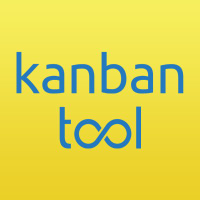
Kanban Tool
Visual project management tool with intuitive Kanban boards.
Miro
Miro is an innovative virtual workspace designed to enhance collaboration through visual brainstorming and project planning. With an extensive toolbox that includes templates, digital sticky notes, and support for diagrams, Miro has become a go-to tool for remote teams around the world. Established in 2011, the platform caters to creative professionals, educators, and teams looking to organize their thoughts and projects effectively. As of recent reports, Miro boasts over 30 million users and continues to thrive in the realm of digital collaboration.
Miro’s standout feature lies in its infinite canvas, allowing users to place elements anywhere on the board. This flexibility aids in developing ideas without spatial limitations, which is crucial in a brainstorming session. Additionally, the platform supports real-time collaboration, meaning multiple team members can interact with the board simultaneously, contributing to the richness of ideas generated. Many organizations employ Miro for remote workshops and design sprints, streamlining their process while engaging participants on a visual level.
Another remarkable aspect of Miro is its vast library of templates. These pre-built frameworks cater to various needs such as user journey mapping, sprint planning, and team meetings. This reduces the friction of starting from scratch, allowing teams to jump right into ideation and planning. Moreover, Miro integrates seamlessly with popular tools like Slack, Jira, and Google Drive, ensuring teams can work within their preferred ecosystem without disruption.
On the user support side, Miro offers extensive documentation through its website along with tutorials and customer service options for troubleshooting. Organizations that adopt Miro have reported increased productivity and creativity within their teams, highlighting that a shared visual space can dramatically change the dynamics of remote collaboration.
Basic plan for small teams
This tool offers both free and paid plans. Check their website for detailed pricing information.

Visual project management tool with intuitive Kanban boards.

An online whiteboard tool designed for team collaboration and brainstorming.

A dynamic virtual workspace that fosters collaboration and innovation.

Obsidian is a powerful note-taking tool focused on personal knowledge management.

Streamline workflows with intelligent automations between apps.

A powerful voice calling tool designed for sales and CRM efficiency.

GanttPRO offers intuitive Gantt chart tools for project management.

Record and share video messages for remote collaboration.
Miro provides comprehensive platform support across Web browsers, iOS devices, Android devices, Windows computers, Mac computers. This cross-platform availability ensures you can access and use the tool wherever you work, providing a seamless experience across all your devices.
Miro offers a flexible pricing structure with both free and paid plans to accommodate different needs and budgets. Additionally, a free trial is available, allowing you to test the full feature set before making a commitment.
Miro prioritizes security and data protection with a comprehensive set of features, including Single Sign-On, Multi-Factor Authentication, End-to-End Encryption, Audit Logs. The platform complies with major security standards and regulations, including GDPR (General Data Protection Regulation), HIPAA (Health Insurance Portability and Accountability Act), SOC 2.
Miro is specifically designed to meet the needs of startups, small businesses, enterprise organizations, remote teams, designers. The tool provides features and functionality specifically tailored to address the unique challenges and requirements of these user groups.
Miro offers several significant advantages, including supports real-time collaboration, infinite canvas for unrestricted brainstorming, user-friendly interface, extensive library of templates, integrations with major productivity tools, mobile accessibility for on-the-go access, community forums and tutorials for user support, ability to export boards in various formats. However, potential users should consider some limitations, such as limited features in free plan, may require training for advanced use, performance issues with larger boards, subscription costs can increase significantly for larger teams, reliance on internet connectivity for optimal use, mobile version lacks some desktop functionalities, complexity can lead to overwhelmed users, collaboration features might be overkill for solo projects.
Miro is built on and integrates with modern technologies including Node.js, React, Amazon Web Services (AWS), MongoDB. This robust technological foundation ensures reliable performance, scalability, and seamless integration capabilities.
Miro is versatile and can be used in various scenarios, including: Conducting remote workshops, Creating user experience journey maps, Planning sprints for agile teams, Organizing brainstorming sessions, Educational use in remote classrooms, Team-building exercises, Designing prototypes and wireframes, Developing marketing strategies, Collaborating on research projects, Facilitating product development discussions. These use cases demonstrate the tool's flexibility and broad applicability across different business needs.
Miro was established in 2011 and is headquartered in San Francisco, USA. Since its inception, the platform has evolved and grown to become a trusted solution in its field.
Jobicy
578 professionals pay to access exclusive and experimental features on Jobicy
Free
USD $0/month
For people just getting started
Plus
USD $8/month
Everything in Free, and:
Miro is an absolutely fantastic collaboration tool. The infinite canvas is perfect for brainstorming sessions, and I love how easy it is to add sticky notes, images, and diagrams. My team recently used it for a project planning workshop, and it really helped us visualize our ideas. One thing I think could be improved is the integration with other tools; sometimes it feels a bit clunky. Still, Miro has definitely transformed the way we work together!
I’ve been using Miro for some project planning with my team, and honestly, it’s not bad. The UI is pretty clean and easy to navigate, which makes brainstorming sessions a lot smoother than I expected! But sometimes the syncing can be kinda slow af, especially with multiple people on at once… Overall tho, can’t complain too much—it does the job!
i’ve been using Miro for a few months now, and it’s been a game-changer for my remote team collaboration. the infinite canvas is fantastic for brainstorming sessions, and the sticky notes feature makes it super easy to organize ideas visually. i also love the integration with tools like slack and zoom, which streamlines our workflow. however, sometimes i find the interface a bit overwhelming with so many options. overall, Miro has significantly improved our productivity, and i highly recommend it for any team looking to enhance collaboration!
Miro has truly transformed the way my team collaborates, especially during our brainstorming sessions. The infinite canvas feature allows us to map out ideas freely, and the sticky notes make it easy to organize thoughts visually. I love using the templates for sprint planning; they save us so much time. One area for improvement would be the mobile app, which can be a bit clunky. Despite that, Miro has become an essential tool for our remote work, and I can’t imagine our workflow without it!